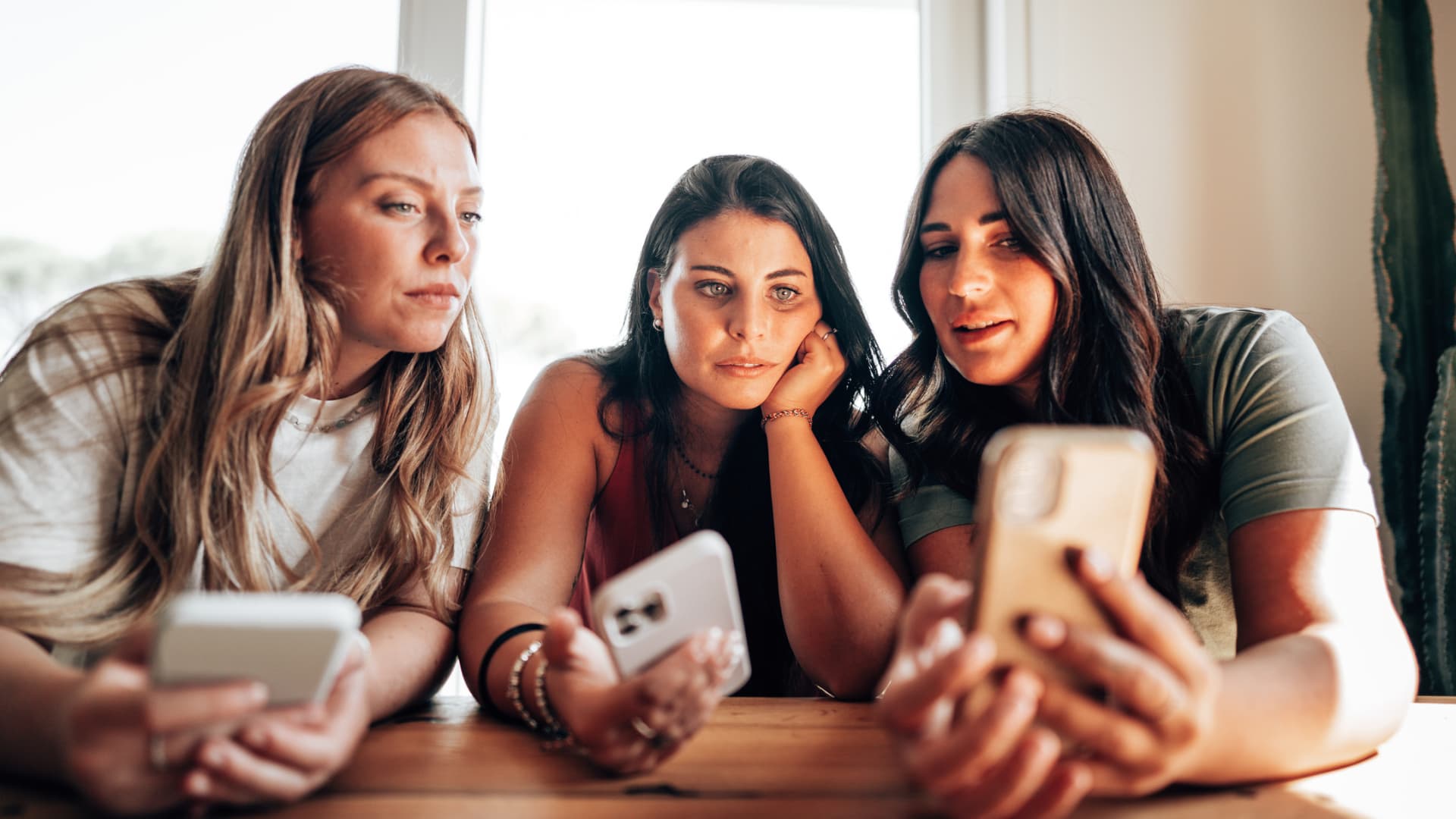[ad_1]

Recently I positioned this concern to my teen little girl: Aren’t we tired of influencers?
” No,” she stated.
Yet regardless of my little girl’s viewpoint â $ ” she’s 16 â $ ” I understand I’m not the just one fed up with the battery of points I’m informed to purchase on social networks. Which is why the surge of “underconsumptioncore” came as a welcome change far from influencer society â $ ” and made me ultimately really feel seen.
Even more from Personal Money:
‘ Economic downturn pop’ remains in: Exactly how songs appeals financial trends
‘ I’m searching for a male in financing’
‘ I weep a whole lot however I am so efficient, it’s an art’ Â
Years back, I made a dedication to deal with much less. Yet sticking to a requirement extra in accordance with minimalism than overconsumption is a pledge I have actually needed to restore annual, month-to-month, everyday.
Let’s simply claim it’s a battle. Instagram does not aid.
Progressively, I have actually discovered the unrelenting shilling of every little thing from healthy protein trembles to exclusive trip rental properties tiring. In addition to exactly how this consistent stream of influencer advertising is typically up in arms with my very own way of life goals (and budget plan).
Pro pointers: I have a display time frame established for Instagram, maintain funded messages “snoozed” and consistently “record” advertisements that really feel invasive. Likewise, I comply with “the 48-hour guideline,” which calls for waiting a minimum of 2 days prior to making any type of optional acquisition, via social networks or otherwise.
‘ An arms race for customer bucks’
Although most Americans claim they are living paycheck to paycheck, consumers routinely spend more than they can afford on impulse purchases, many studies show â particularly those advertised on sites such as TikTok, Instagram and Facebook.
“We are bombarded with shopping opportunities,” said Casey Lewis, a social media trend expert and founder of trend newsletter After School. “Now it’s sort of an arms race for consumer dollars.”
One report by Intuit Credit Karma discovered that approximately 2 in 5 Americans have actually acquired items promoted on social networks in the previous year, and virtually a quarter â $ ” 23% â $ ” of them spent $1,000 or even more on those purchases.Â
Generation Z, particularly, makes purchasing choices greatly driven by TikTok and Instagram, where influencer referrals play a really substantial duty, another KPMG report revealed.
The surge of #underconsumptioncore
The timing is on point, given that consumers feel increasingly cash-strapped and their confidence in the economy is showing signs of strain, according to Brett House, economics professor at Columbia Business School. “It’s a movement that is cyclical, driven by macroeconomic conditions,” he said.
In fact, the idea behind underconsumption has emerged with “predictable regularity” at similar times in recent history, including in the early 1990s, then when the dot-com bubble burst in early 2000 and again during the Great Recession, House said. “In each case the aesthetics were a little different, but it represented a back-to-basics mentality.”
This time around, #underconsumptioncore stems from a number of other factors, as well, including a desire to live more intentionally and sustainably. Gen Z is also the most eco-conscious generation.
But still, this trend is primarily born out of necessity. To be sure, few people can afford all of this stuff.
Young people are just sort of like ‘enough, we can’t possibly keep up.’
Casey Lewis
social media trend expert
Americans are feeling the pain of persistent inflation, with various reports showing many have exhausted their savings and are now leaning on credit cards to make ends meet.
Financial well-being is deteriorating and young adults, especially, are struggling.
Similarly, interest in “conscious consumerism” and “de-influencing” have also peaked, both of which aim to put a lid on social media-related overspending.
“Young people are just sort of like ‘enough, we can’t possibly keep up,’ and it doesn’t feel good anymore,” Lewis said.
But whether #underconsumptioncore is simply a mood or a movement, it’s still hard to say. “The lifespan of this trend depends, in a lot of ways, on how long the economy continues to slow and incomes remain below price gains,” House said.
Lewis is skeptical about whether this trend will have any sustained traction at all. Already, her feed is being overrun with #backtoschoolhauls, including outfits, gear and dorm décor, she said.
[ad_2]
Source link .




